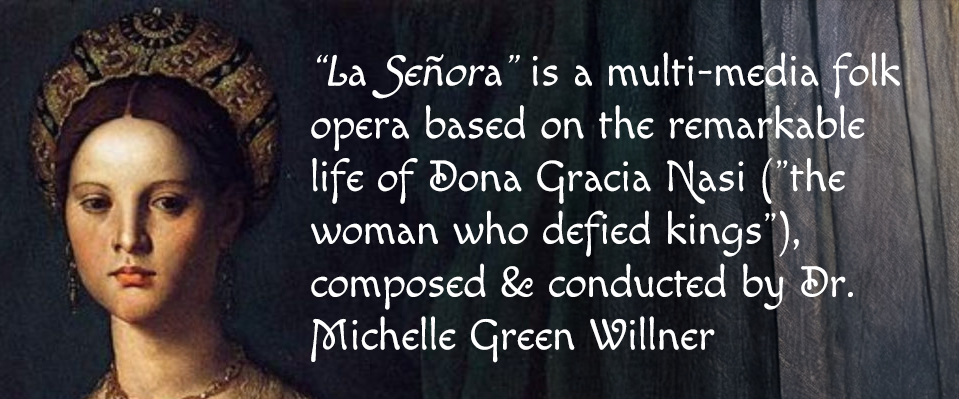It was fortuitous that I decided to start researching both my Jewish roots and culinary practices in the sane year 1992 It was the 500th anniversary of the Expulsion from Spain and fortunately for me that year’s related events created a lot of interest in Sephardic matters My maternal grandmother’s family came from the Azores Island part of Portugal The Azores are nine small islands including “our” island of Faial midway between Portugal and New York essentially in the middle of the Atlantic Ocean When they came to the United States in early 1870s my ancestors settled in Watsonville CA I have thought for many years that perhaps these ancestors had once been Jewish
Years earlier my interest in cooking began with one of those home economics classes girls were still encouraged to take in the junior highs of the 1960s Many years later I was lucky to have twelve full months as a housewife and mother with no other responsibilities! My husband of that time was game for my “experiments” in the kitchen and gave me my first gourmet cookbook by Craig Claiborne with the subject of cooking with herbs Twenty years and many cookbooks later I bought my first Jewish cookbook the incredible survey Sephardic Cooking: 600 Recipes created in the Exotic Sephardic Kitchen from Morocco to India by Copeland Marks The book was published by Knopf in 1992 to commemorate the 500th anniversary of the expulsion from Spain Consequently I was off fullsteam ahead on a journey into Sephardic cooking; and yes also with the occasional sweet and sour stuffed cabbage or kasha varnishkas!
Early on questions began to arise about my family’s food practices Did we eat pork? Yes Did we eat rabbit? No The thinking on the later according to my grandmother was that it didn’t have protein or nutrition This never made any sense to me even as a young child Well of course this doesn’t really prove anything regarding Jewish ancestors and kashrut (kosher) practices As many of you may have experienced this is the constant problem for most of us presumed descendents of crypto Jews; having to constantly answer many probing questions I now know that much can happen in 500 years in the way of assimilation and not just for presumed crypto Jews
At the same time as my Jewish food obsession began so did my Jewish religious and genealogical explorations I took an introduction to Judaism class joined a Reform congregation and had a moving conversion ceremony on the night of Selichot very appropriately the forgiveness ceremony in preparation for the High Holy Days I knew where I belonged and who knew how long it would be before I could “prove” my presumed heritage? Being blessed with an aliyah in the historic Beth Israel building in Old Town San Diego was the highlight of my many Jewishcentered activities In addition I became active in the San Diego Jewish Genealogical Society though I encountered few researching a Sephardic background Again because it was just after the 500th year there were fortuitously many events related to the expulsion However it was frustrating searching in the Mormon Library for Azorean records since many of the source materials were either lost or of a peculiar oval shape as many documents’ edges had been singed by lava flows! Though I did get started with the initial help of a researcher I subsequently have found ancestors two hundred years back on this AzoreanPortuguese side of my family The following year 1993 I went to my first conference for the CryptoJewish Society Blessedly I found others like me
I am very moved that we Jews especially in America get to practice our religion and cultural history; that wasn’t always so and it means a lot to me to know that every time I do anything “Jewish” I’m also honoring those Jewish souls of former “secretive” times who were unable to practice openly In other words I am trying in my own little way to make up for some of the lost time I try to balance my time practicing Judaism with searching my roots; gone are the days of a lot of time for genealogical obsession I wish I had more time for these activities But since a person has to eat and I like to cook I now have a growing Sephardic cookbook collection and am sharing many of the recipes with friends and family
My grandmother Philomena Gertrude Roza (nee Pereira da Rosa) Baldwin was a second generation AzoreanAmerican In trying to find out unusual things that she cooked I asked my mother what she remembers She recalls Grandmother having cooked fennel also called anise Strangely she called it finocchiothe Italian name instead of funcho its Portuguese one (That could be another story) Fennel is a member of the carrot family though its stalks look more like celery with a slight licorice taste She gathered it from abandoned lots around Oakland CA where she lived at the time Fennel has come to grow wild in California Grandmother or Minnie as she was called apparently boiled it Joan Nathan reports in Jewish Cooking in America that “: Fennel had been associated with Jewish cooking for centuries in Europe” Again this doesn’t “prove” anything but
Fennel is a digestive and I thought with the hot weather approaching it might be nice to experience some cooling recipes with this vegetable Pamela Grau Twena author of The Sephardic Table mentions that in Tunisia where the weather is hot and dry they put the green part of fennel in a pitcher of water and keep it refrigerated This might be especially appreciated come August
I would like to profile two books and some especially refreshing fennel recipes from them appropriate for summer
The Book of Jewish Food: An Odyssey from Samarkand to New York by Claudia Roden is a quite attractive book with unusual pageelement designs There are many sections covering quite a lot of history At 668 pages I find it a great resource when comparing recipes with other sources Of particular note are the wonderful sepia photographic reproductions from many collections including historic postcards as well as the author’s own family collections Roden shares her family practices throughout Her rabbinic Sephardic family settled in Syria and eventually moved to Egypt There is an admittedly heavy emphasis on Syrian recipes Since Syrian food is especially tasty I have no problem with this
Roden’s cookbook includes both Sephardic and Ashkenazi recipes twothirds of which are Sephardic I asked her about this at the Jewish Book fair in San Diego several years ago when she presented this book and she explained that while Ashkenazi cooking tends to be unilateral Sephardic is much more diverse requiring more recipes and thus pages And I say this without hesitation; if you are only to have one Jewish cookbook (though I couldn’t imagine why one would want to do that) her book should be the one
The following recipe comes from Roden’s book
CELERIS RAVES ET FENOUILS AU CITRON
-
- 5 garlic cloves chopped
-
- tablespoons peanut or light vegetable oil
-
- 1 celeriac weighing about 1 lb 11 oz peeled and cut into ¾inch cubes
-
- 1 large or 2 small fennel heads cut in half then in thick slices
-
- Juice of 2 lemons
-
- 2 teaspoons sugar or to taste
-
- Salt and white pepper
- 2 tablespoons chopped flatleafed parsley
In a large pan fry the garlic in the oil till lightly colored Add the celeriac and fennel and barely cover with water Add the lemon juice sugar and a little salt and pepper and simmer with the lid on stirring occasionally for 1/2 hour Then take the lid off and reduce the liquid to a thick sauce Serve cold mixed with chopped flatleafed parsley The author notes that sometimes in Egypt they would add 1/4 teaspoon of turmeric to the water which gives the vegetables a paleyellow tinge (I tried this and it looks quite attractive giving a color similar to some curries Go easy with the tumeric though)
The following simple and refreshing salad recipe comes from a very special and specialized cookbook The Scent of Orange Blossoms: Sephardic Cuisine from Morocco by Kitty Morse published by Ten Speed Press She has produced many fine cookbooks with the subject of her native Morocco; her grandparents on her mother’s side are Sephardic She has lived in our San Diego North County for some time Along with her coauthor Danielle Mamane a resident of Fez they were on an urgent quest to document In their words it was “: their way of honoring and preserving the culture and cuisine of Morocco’s Jews” Sadly they noted only about a dozen Sephardic families are left in Fez
FRESH FENNEL SALAD
-
- 2 fennel bulbs trimmed
-
- Juice of 1 lemon
-
- 3 tablespoons extra virgin olive oil
-
- ½ teaspoon salt
-
- ½ freshly ground black pepper
-
- 1 sweet onion thinly sliced
-
- 1 stalk celery finely diced
- 10 drycured black olives for garnish
Slice the fennel bulbs into thin rings In a small bowl whisk together the lemon juice olive oil salt and pepper
In a bowl combine the fennel rings onion slices and celery Add the dressing and toss to coat evenly Garnish with the olives and serve
The author suggests adding chunks of canned tuna to this salad for a quick and light luncheon Next time I fix this recipe I intend to add fresh orange slices
VICTORIA ROZA is long time SCJS member who lives in San Diego CA As she writes above she’s traced her family back 200 years to the Azores For her article soon on her search and the insights it brought her Click here





